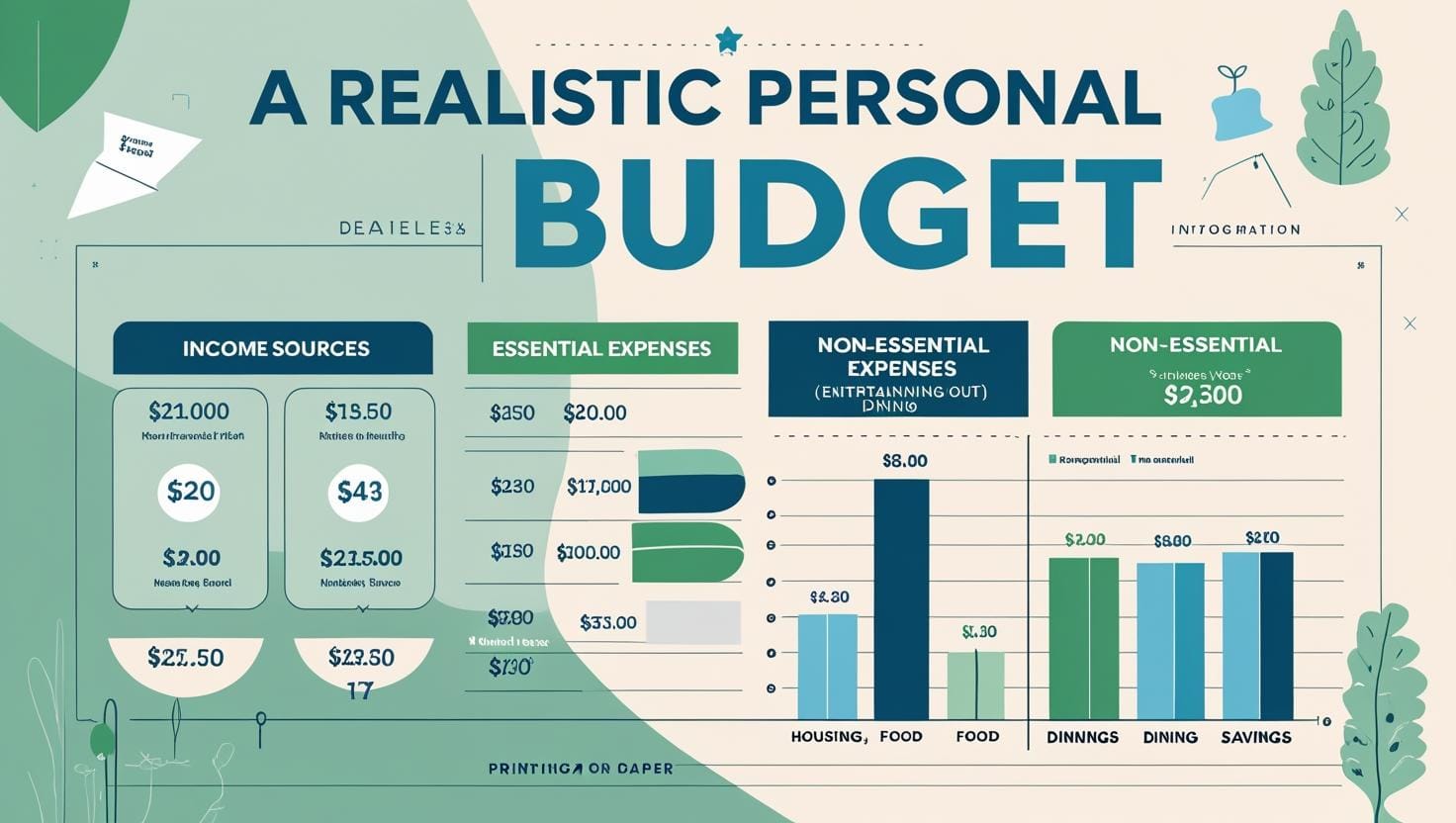How to Create a Budget That Actually Works (Without Feeling Miserable)
A budget doesn’t mean saying no to everything — it means saying yes to what matters. Here's how to create a simple, real-world budget that actually works.

Let’s be real — the word “budget” often feels like a punishment.
No Zomato. No shopping. No life.
But here's the truth:
A budget isn’t about restricting your life.
It's about telling your money where to go, instead of wondering where it went.
Whether you earn ₹10,000 or ₹1 lakh, a good budget helps you feel in control — not confused.
And the best part? It doesn’t need to be complicated.
💡 Why this topic?
- Most people either don’t budget or try unrealistic ones and give up
- Budgeting feels restrictive — we’ll flip that perspective
- Perfect for students, salaried folks, homemakers, and even small business owners
📋 What We’ll Cover in the Post:
- Why most people fail at budgeting
- A simple budget formula that works (like the 50-30-20 rule)
- How to track income and expenses without stress
- Tools you can use (notion, apps, or plain paper)
- How to include fun money — because life isn’t only bills
- Sample monthly budget: ₹25,000 or ₹50,000 income examples
❌ Why Most People Fail at Budgeting
- They try to cut everything overnight
- They don’t track where money goes
- They make unrealistic plans like “I’ll save 80% this month!”
- They forget to include fun or personal expenses
Result: Budget feels like a burden → they quit.
✅ The Budget That Actually Works = Flexible + Real
Try the 50–30–20 Rule:
| Type of Expense | % of Income | Example (₹30,000 income) |
|---|---|---|
| Needs (rent, bills, groceries) | 50% | ₹15,000 |
| Wants (food, Netflix, shopping) | 30% | ₹9,000 |
| Savings/Investments | 20% | ₹6,000 |
💡 This isn’t a hard rule — adjust based on your goals and situation.
🧾 Step-by-Step: How to Make Your First Budget
🟢 1. Write Down Your Monthly Income
Include:
- Salary
- Freelance
- Pocket money
- Side hustle
Let’s say: ₹30,000/month
🟢 2. List All Your Fixed Expenses
These don’t change month to month:
- Rent
- EMIs
- Wi-Fi
- Tuition fees
- Mobile plan
Example: ₹11,000 total
🟢 3. Track Your Variable Expenses
These change every month:
- Food
- Travel
- Shopping
- Swiggy, Chai, Instagram ads
👉 Track for 2 weeks using:
- App (Money Manager, Walnut)
- Google Sheet
- Pen + paper
You'll be shocked where the money goes 😄
🟢 4. Decide on a Realistic Saving Target
If 20% feels tough, start with 10%.
Even ₹1,000 saved is better than ₹0.
🟢 5. Set a “Fun Money” Limit
This is the magic part.
Plan for chai, samosa, movie, or that Amazon deal.
When it’s in your budget — you can enjoy it guilt-free 🎉
🧮 Sample Budget (₹30,000 income)
| Category | Amount |
|---|---|
| Rent | ₹6,500 |
| Food & Groceries | ₹4,500 |
| Transport | ₹2,000 |
| Phone/Wi-Fi | ₹1,000 |
| Fun/Shopping | ₹4,000 |
| Savings + SIP | ₹5,000 |
| Emergency Fund | ₹1,000 |
| Misc (gifts, apps) | ₹1,500 |
| Total | ₹30,000 |
🧠 Tips to Make Your Budget Stick
- Review weekly: Takes 10 minutes, helps spot leaks
- Don’t over-restrict: You’re human. Adjust as needed
- Use cash or UPI limit: Helps control daily spending
- Celebrate small wins: Hit your savings target? Treat yourself
💬 Final Thoughts
Budgeting isn’t about being “perfect”.
It’s about being aware, intentional, and prepared.
Whether you earn ₹10,000 or ₹1 lakh, budgeting helps you:
- Avoid guilt
- Save more
- Spend wisely
- And feel more confident with your money
💡 Remember: If your money isn’t working for you, it’s probably working for someone else.
📢 Coming Soon:
Free Budget Planner Sheet (printable + Google Sheet)
📩 → Subscribe to the Bitveen Newsletter and get tools like this directly in your inbox.
This post is for educational purposes only and should not be considered financial advice.
